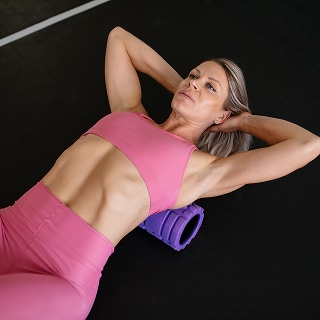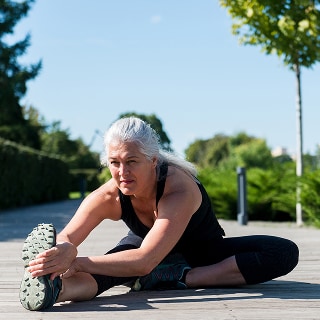
Discover a collection of stories from our authorities on the Longevity Lifestyle, created by ROAR Forward, a collaborative of longevity thought leaders and content creators.
Is presiding over your computer creating a permanent slouch? Do you constantly feel stiff? Or dull and lackluster in general? These common symptoms of our modern world aren’t alleviated by pushing through, extra cardio, more scrolling or doing more, more, more. In fact, they can be addressed through a common connection—a connective soft tissue that integrates the various aspects of your being, from physical to emotional and beyond. That connection is called fascia.

What Is fascia?
Fascia used to be considered a kind of packing wrap for the body, like a wetsuit, with the sole purpose of holding muscles, bones and organs in their places. But we now know that “fascia is actually a communication network sending and receiving information, touching every cell, and sending and receiving light, sound, frequency, energy and vibration. Which is why it’s so exciting to me,” says the Founder of the Aligned Life Studio, Lauren Roxburgh. She has taken fascia seriously for over two decades, helping people transform their inner and outer bodies and lives.
Why is fascia so important?
• Fascia is a sensory organ. “We’re realizing it’s the richest sense organ in the body,” says Roxburgh, “containing more receptors than our eyes and skin, our fascia is always perceiving everything coming our way, sending signals and telling the body what to do, to be scared, fight, freeze, digest, heal and rest.”
• Fascia is key to longevity. Keeping fascia supple, stretched and smooth can help everything from recovering from injury to pain management, to athletic performance, to dealing with premature aging. After all, fascia is mostly made of collagen.
• Roxburgh believes fascia connects us to our emotional intelligence. “When fascia clears, we can hear ourselves again. We can get in tune with our body’s innate intelligence, our gut instincts, our intuition and live from our heart and less from our head. That’s happened to me. Physically I also feel a lot lighter, I’ve lost weight but maintained my muscle.”
• Massaging and mobilizing fascia is also a way to slow down. “Really, we need more yin to the yang, the being to the doing. Work with your body, not against it. Slow down people.”

How to keep fascia healthy
• To help fascia do its job we need to connect with it. Fascia needs to be moved, stretched, pressed, elongated and touched through the skin.
• Roxburgh has a “non-negotiable” 5-minute Hero Fascia Flow she does every morning; it requires no equipment and is free to try. She says these stretching movements open the five fascial pathways of the body which can ultimately help boost metabolism, promote circulation of oxygen and blood, release tension, free up emotional energy and strengthen alignment and posture.
• A great way to get fascia into its optimum shape is foam rolling. Just rolling your upper back on a foam roller will immediately give a sense of lightness, Roxburgh says. “You’ll feel more confident, more upright and your solar plexus will feel more open.”
• Rebounding (bouncing on a mini-trampoline), dancing or jumping jacks also help fascia stay lubricated and release its tension. Roxburgh says you only need about two minutes on the rebounder daily “to get your lymph flowing, and your glow going.”
• Fascia is made up of 70% water, so it’s important to keep it, and yourself, hydrated. When fascia dries out, it becomes stiff, limiting your mobility and potentially leading to pain.
• Stretching keep fascia supple. A study in Scientific Reports says, “gentle daily stretching for 10 minutes can reduce local connective tissue inflammation and fibrosis.”
Fascia and aging
• “If you’re all clutched in fight or flight, you’ll age more rapidly,” says Roxburgh. “Rolling and rebounding help you get more into the parasympathetic state of rest, digest, heal.”
• Fascia helps keep you flexible, a marker for aging. One study published in the Journal of Anatomy, showed that there is indeed a connection between fascia becoming thicker during aging, restricting joint range of motion. The connection between the muscles and fascia is also weakened as we get older, all the more reason to keep fascia supple and moving.
• There’s an emotional component to fascia, too. “We know that moving it, getting it hydrated, smoothed out and cleared helps people not just change physically, but get more in touch with their emotions and sensuality in their bodies,” says Roxburgh. “Fascia has been coined the sixth sense. It’s a super power.”
Explore more longevity lifestyle stories here.
